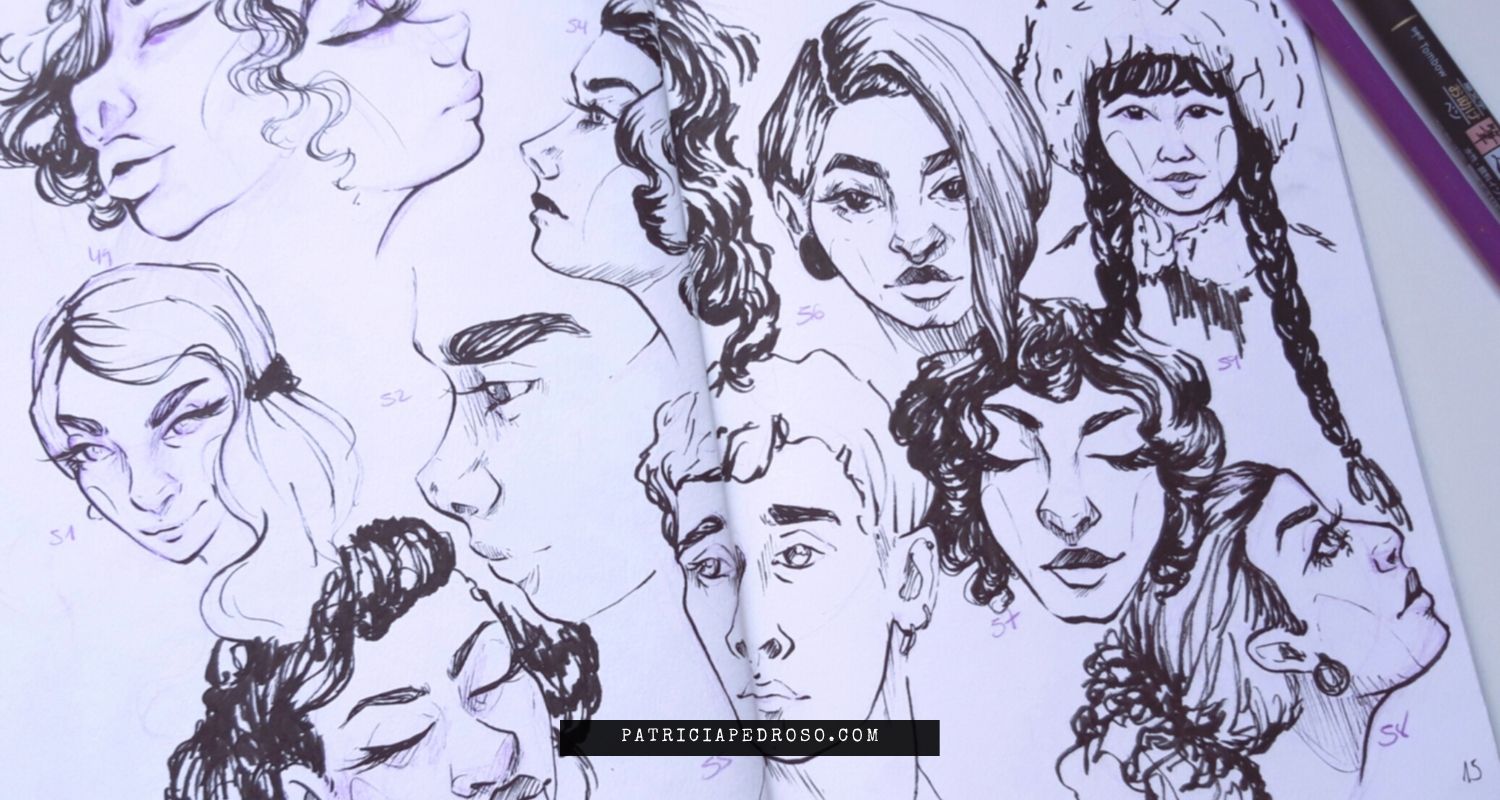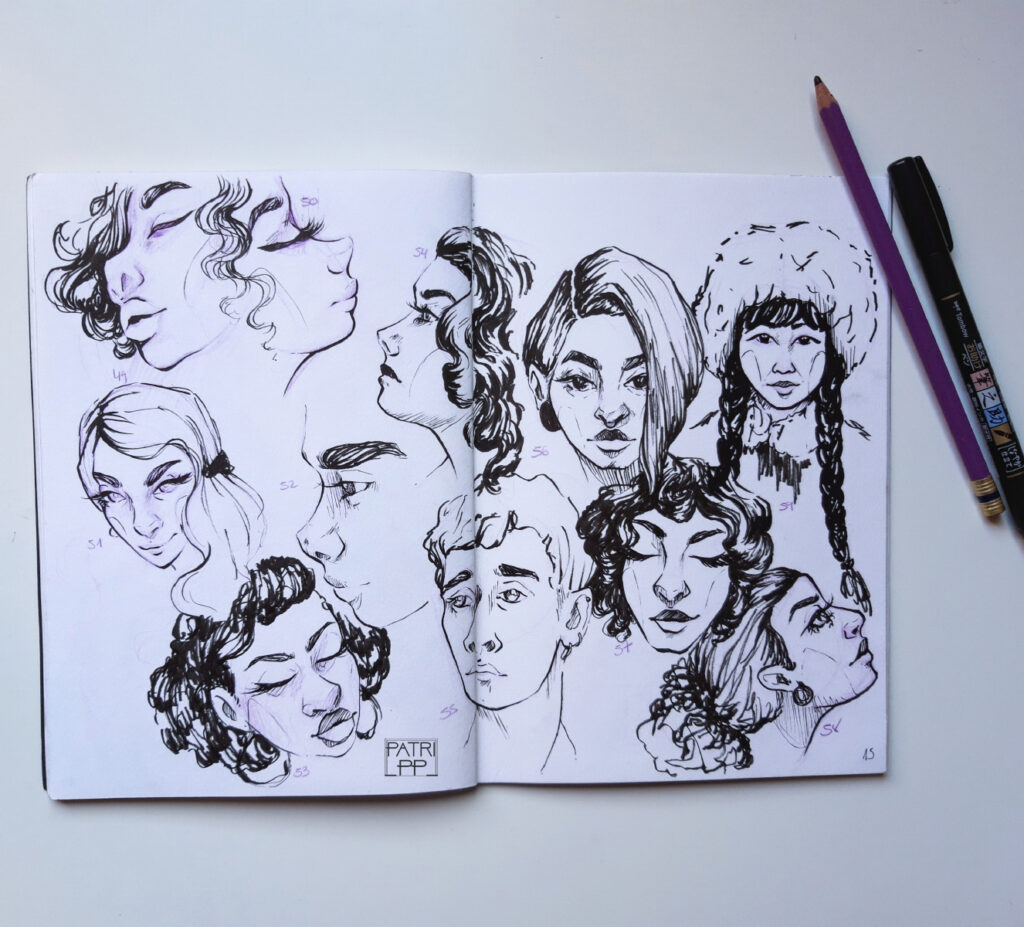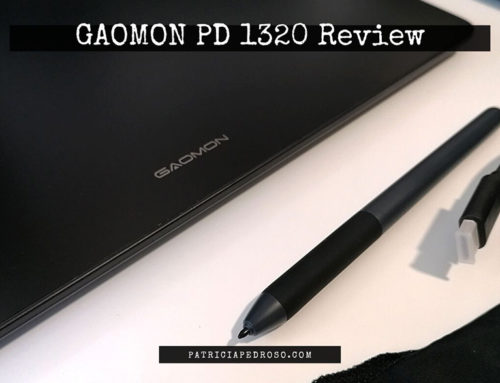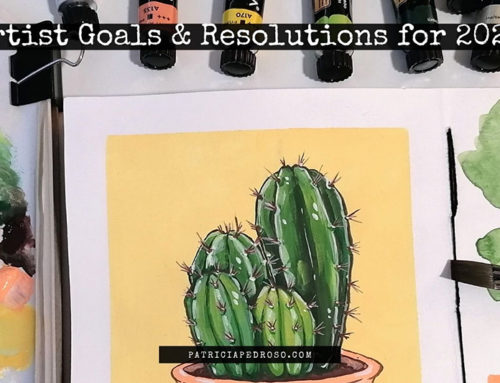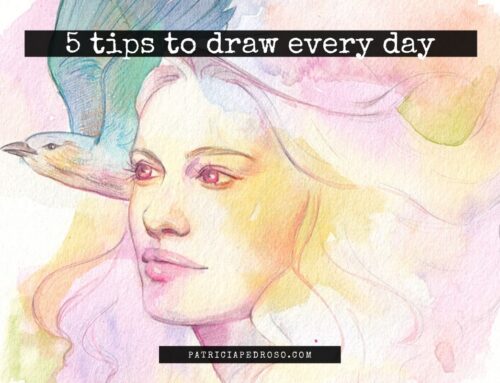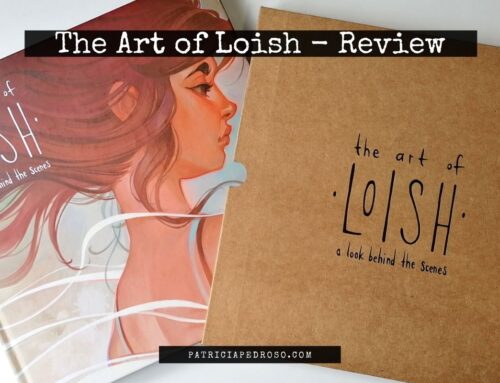Have you heard about this latest trend among artist?
Let’s start by talking a bit about the to the 100 heads challenge and what is it about.
Then I’ll talk about how it worked for me and some personal advice that I reflected after doing it. I’ll let you know my mistakes so you don’t commit them too!
Although the challenge was created over a year ago, it’s still a trending challenge amongst artist!
Wanna know more?
Let’s start!
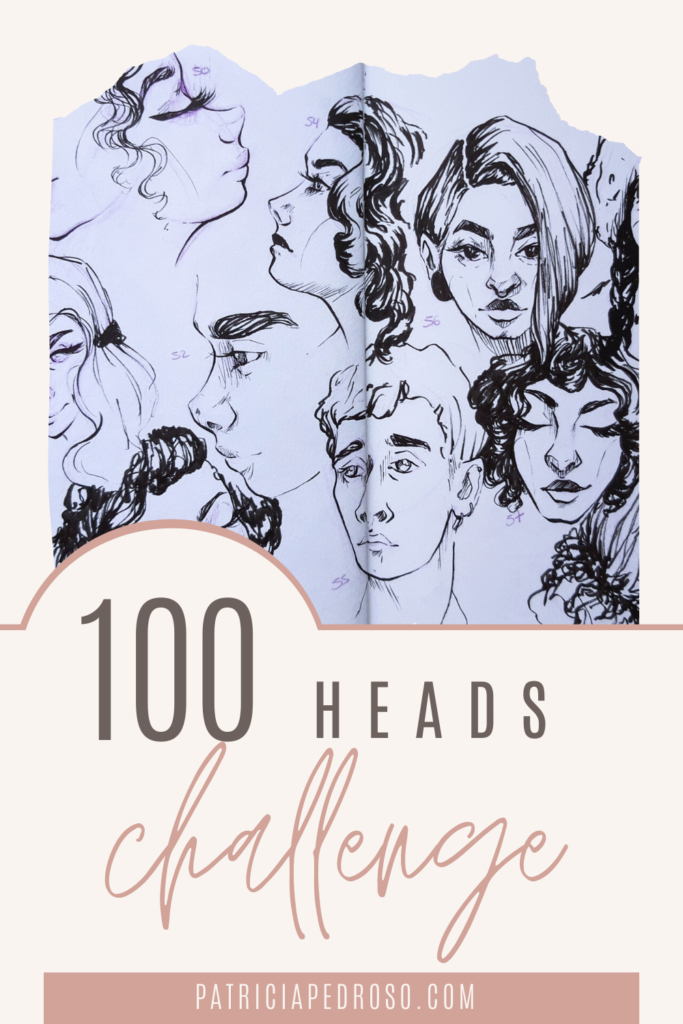
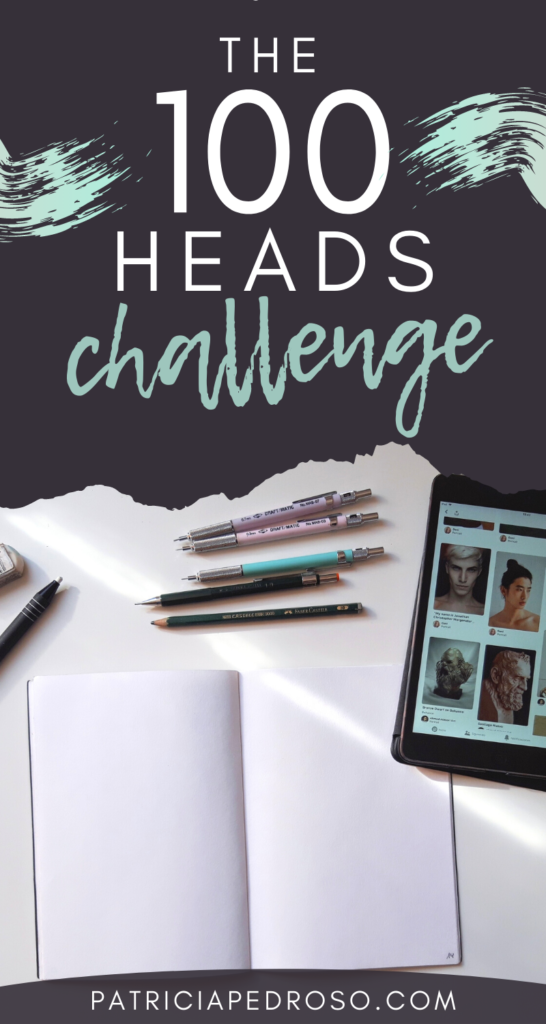
What’s the 100 Heads Challenge?
The 100 heads challenge was created by the artist Ahmed Aldoori and it basically consists in drawing 100 heads (portraits) in 10 days.
That is, 10 heads a day.
The official hashtag of the challenge is #meds100heads – he had to change it cause the #100headschallenge was already used.
This challenge is to practice & refresh your knowledge of face proportions and anatomy, doesn’t matter if you’re a beginner or a more seasoned artist.
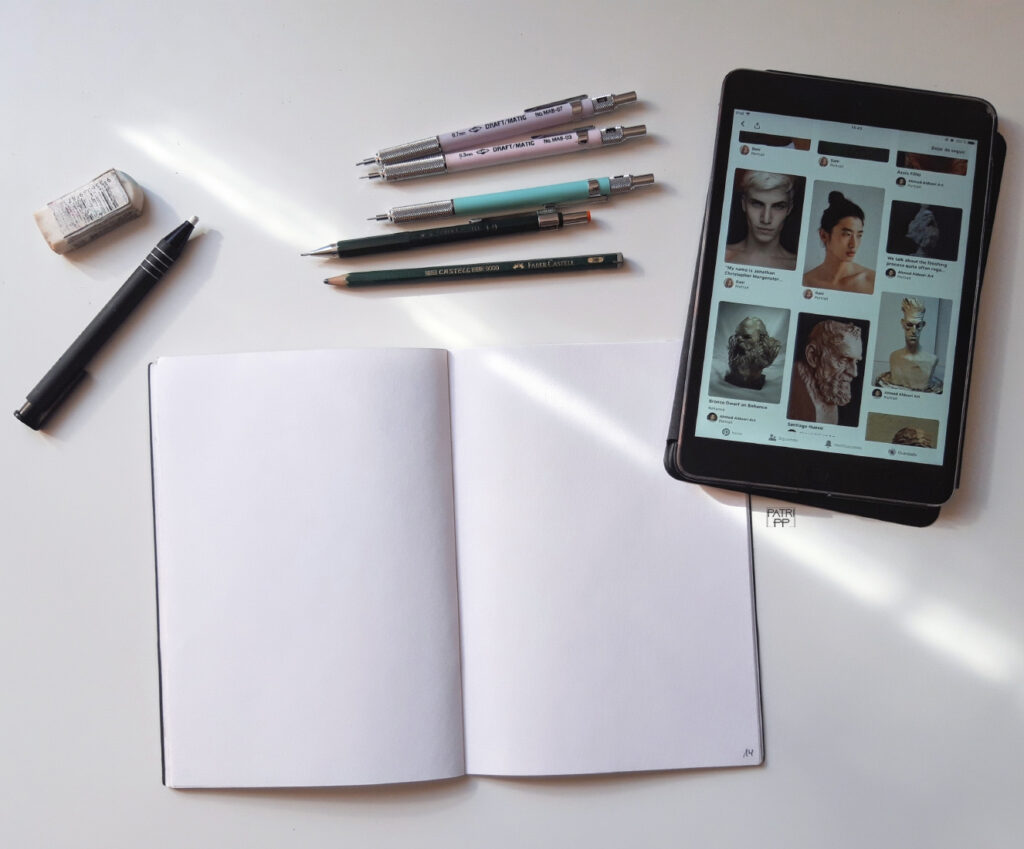
He has a Pinterest board ready with quite a variety of heads, so you don’t have to search for them.
You can draw from imagination but the main point is to draw from references, so you practice facial anatomy and the wide variety of angle/traits/lightning/… that can affect when you draw different faces.
The point of the 100 heads challenge is more about doing portrait studies, so avoid taking too long on each or you’ll never finish – plus all the stress that comes with it.
With this, you’re gonna train your eye to observe better, and this will help tremendously when you’re done with the challenge and do your own work.
Anyway, here’s Ahmed’s video so you can see all the resources – aka Pinterest board – and his explanation of the challenge, cause it’s very inspiring.
Sounds easy enough, right? I thought so in the beginning too, but it proved harder than I thought.
- Related: Looking for a new challenge? Try the 100 somethings project. Read here for more information.
You’ve already done the challenge?
Don’t worry, there’s a second part!
The 50 heads challenge, 50 heads in 10 days.
For this next one I actually ended up doing a Pinterest board of my own, I grabbed a lot of references from Ahmed’s board but I also have been adding a few of my own. This is more according to my own preferences but I’ll leave it here in case you want to check it out!
50 heads… So it should be easier, right?
Or maybe not…
Want to find more about it? Read it here:
When it comes to Art Challenges, lot’s of people have trouble tackling them & actually having fun. For some time, I struggled with it myself, but I’ve come up with some tips & conclusions that help me through it, read here to know more: “How to tackle an Art Challenge (without going bat-shit crazy)“
My experience with it and what I learned
I did the 100 heads challenge from January, 10th to January, 20th, 2019.
62 heads out of 100. That was my final score. It was a bit of a mess, I was a bit behind from the start and the last couple of days I couldn’t manage any time to draw.
But! I don’t consider it failing the challenge, because the important thing is to try and reflect on what you learned from it and what you could have improved.
So, let me talk you trough it so I can tell you what I learned.
For this challenge, I decided to start simple; couple of mechanical pencils and my sketchbook.
And I worked like this for around 20 heads.
However, I didn’t stop to consider the materials I used before starting, I just thought that a pencil was basic enough.
I guess my thought process went like this: “I don’t mind the materials or techniques I use for this, I just want to have the 100 heads by the end of the 10 days and have practised head anatomy.”
This is a perfectly valid reason to do the challenge, as it would be to practice doing watercolour portraits.
But in my case, I hadn’t worked with a pencil in a while and I completely forgot that pencil always brings out my “photorealism side”.
So…
Lesson 1: Choose your objective & your materials wisely.
Let’s just say my attempts at quick photorealistic sketches weren’t that quick. Or that realistic for that matter. And it was very frustrating!
I did 8 heads the first day, 5 the second, and I realised that if I kept up like that I wouldn’t make it to the end.
So everything started to be very stressfull.
And here is when the first lesson comes in.
If I had planned better and had a clear objective – more than just “racing to the finish line” – I would probably have picked the supplies wisely and maybe focused more on the task at hand instead of trying to capture every single detail.
Moving on from pencils!
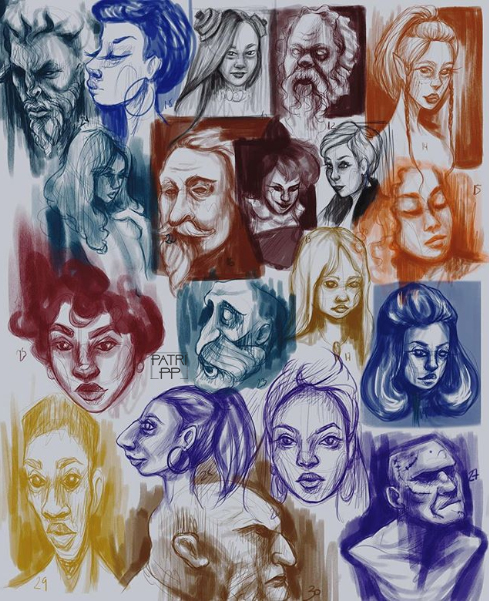
So, I spiced it up a bit and decided to mix it up with digital, cause I work faster and much more loosely that way.
And I wasn’t doing too bad, but man, was it hard to catch up.
The thing is, once you’re 20 heads behind there’s a lot of self-imposed pressure.
But, because of my schedule and my bad organization the first few days, some days I would end up with 12-14 heads and then on the next only with 4.
When there were only 3 days left to finish the challenge I actually picked up the pace.
If only I had discovered that a couple of days before I probably would have been able to get the 100 heads.
I decided to do quick pencil sketches (1-3 min) and then focus on the pen linework to capture the expression. I did it with my favourite inking pen, the kuretake brush pen I talk about in this blog post.
The day I did this I got around 15 faces with not that much effort, and I was observing the faces and capturing the important information just the same as I did before.
But I had more fun and less pressure.
The thing is, if you do it your own way, in a way you enjoy it and you feel more confident with it, the challenge would feel less draining and much more satisfying.
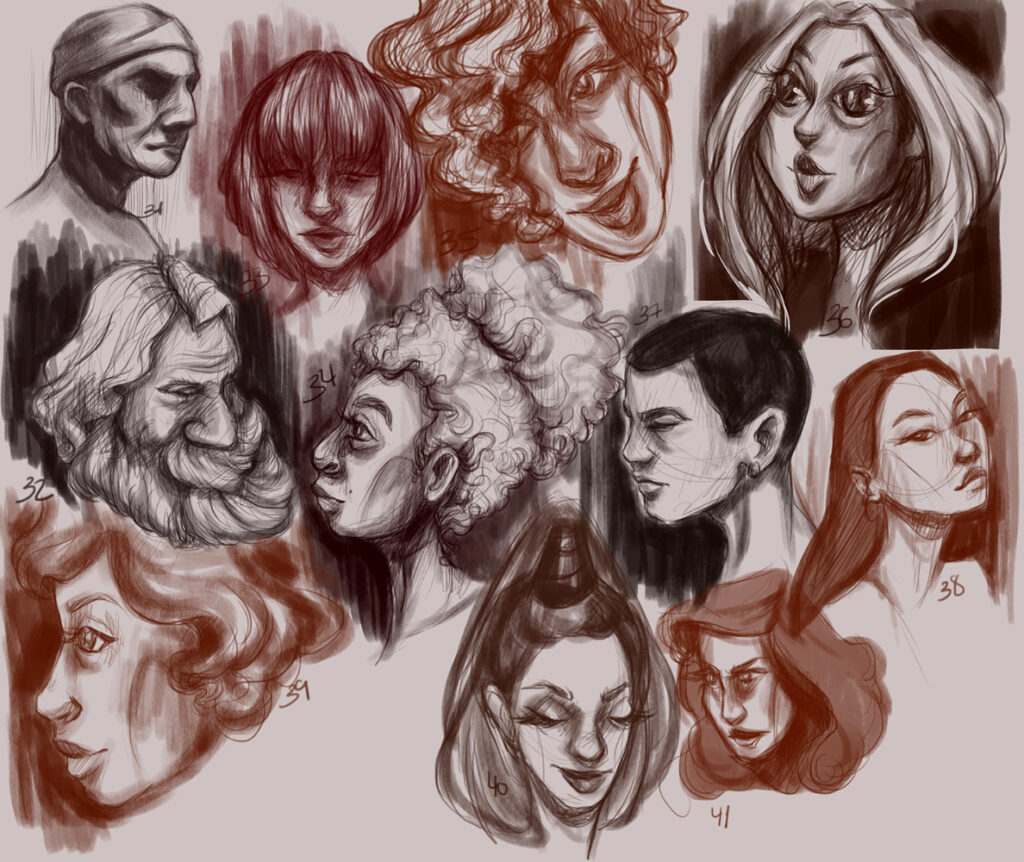
Also, I mixed up different faces than the ones from the Pinterest boards and added an imaginary/cartoony people from time to time to distract myself from so many references.
For example, if I was watching a show while drawing I would draw a few stylised faces from there.
Not as exact copies – I didn’t pause the show or anything – just inspired.
Mixing this helped me to stay on track because I would get bored of drawing from references sometimes.
My main takeaways if you want to jump on this challenge:
First, if you decided you want to participate in the 100 heads challenge try to give yourself a couple of days to plan it, to let it sink into your head.
If you start right away maybe you don’t consider that next week you have an assignment and you won’t have that much time to draw. Or you jump on it and then realise that it’s too much pressure for you right now.
Feel free to take your time, and schedule it in a way that would be a good fit for your life.
I tend to have an idea then jump ahead and do it straight away because I’m so excited to do it. And this doesn’t work well most of the times. – I’m working on it.
So I’m hoping to help you avoid doing the same.
Next up, – this one is important – try to tell yourself from the start that the important thing is not to have the perfect drawings but to do them.
It’s hard at first, I know.
I went with this mentality and it was still hard to grasp at first. I wanted each of them to be perfect.
But after a few days, you realise that’s just not possible.
So if you try to start out thinking like this the challenge would be easier and less stressful for you.
Choose to do something you’re comfortable with, and with the mediums you’re the happiest with.
I mean, it’s challenging enough to do 100 heads in ten days, why make it harder by choosing a medium that will get in the way and make it even more stressing?
Of course, it’s your choice.
But from this experience, I got that if I would have started right away with pen and ink I probably wouldn’t have gotten tired so easily.
So, if you do cartoony faces, do them that way!
If you work better with little gouache paintings, go ahead!
Whatever suits you is fine, you don’t have to do what the rest of the people does.
I want to be clear, this is just a tip to help you make it to the end, but this is not a mandatory thing to go easy.
It’s helpful if you have a goal with this, and if you do, go full on with that.
If your goal it’s, let’s say, practice being bolder and practice making faces with markers instead of getting to the finish and practice anatomy, go ahead and don’t worry too much if you don’t make it.
If you have a clear objective and you get something out of it is still an improvement!
Make it personal, make it yours & enjoy it!
I believe this is the most important lesson I learned. A challenge is a challenge, alright but you should also have some fun.
So try not to pressure yourself.
It’s okay not being able to finish the challenge or to have bad pieces some days.
And avoid comparing your work to others, we know it’s not healthy!
The second 10 would be way better than the first, and so on.
And that’s perfectly fine.
So that’s all for today! Have you heard of this challenge? And if you did, have you tried it?
I would love to hear about your thoughts and experiences with it!

